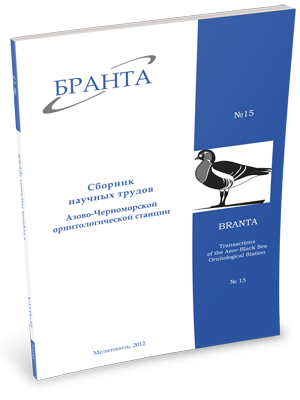
Transactions
of the Azov-Black Sea Ornithological Station



Influence of climatic and topographic factors on distribution of the Black Stork (Ciconia nigra (Linnaeus, 1758)) in Ukraine
H. V. Fesenko, M. O. Kaliuzhna, S. V. Khomenko
On the basis of climatic and topographic data and using an ecological niche modeling method, suitability of different areas in Ukraine for breeding of the Black Stork is evaluated under current and future climate scenarios. In current climate conditions the most suitable areas for the species are in Rivne, Volyn, Zhytomyr, Zakarpattia, Ivano-Frankivsk Regions; also there is a potential for widening of the Black Stork breeding area in Lviv, Volyn, Ivano-Frankivsk, Vinnytsia Regions. Multiple regression and factor analysis confirm that breeding density of the species is in a significant positive correlation with distribution of woodlands and water areas, while influence of industrial facilities, motorways and improved highways is significantly negative. As a result of climate impact assessment on the distribution of the species two populations are located in Ukraine, namely Carpathian and Polissian. In the Carpathians factors that characterize precipitation have stronger influence than temperature factors, however in the Polissia Region the situation is opposite. Expected climate change (doubling of CO2 in the air by 2050) will cause decrease of suitable area for breeding of the species in Ukraine, mainly in territory of the Polissian population. Optimal conditions will remain in Rivne, Volyn, Zhytomyr, Zakarpattia, Ivano-Frankivsk Regions and some other areas. Potential suitability of Vinnytsia Region will be completely lost.
Read the paper in a PDF file